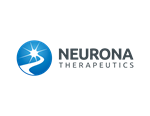Neurona Therapeutics to Present New Preclinical Data and Clinical Trial Plans for Lead Neural Cell Therapy Program, NRTX-1001, at the Annual Meeting of the American Epilepsy Society
Data from IND-enabling studies show accurate delivery, targeted biodistribution, favorable safety profile, durable suppression of seizures and reduction in disease pathology
A first-in-human Phase 1/2 clinical trial of NRTX-1001 in people with drug-resistant mesial temporal lobe epilepsy has been initiated and will begin recruiting soon
SAN FRANCISCO, Dec. 03, 2021 (GLOBE NEWSWIRE) -- Neurona Therapeutics, a clinical-stage biotherapeutics company advancing restorative neural cell therapies to treat chronic neurological disorders, today announced that Catherine Priest, Ph.D., Neurona’s head of preclinical development, and David Blum, MD., Neurona’s head of clinical development, will present preclinical data that support the company’s recently cleared investigational new drug (IND) application and the initiation of the first-in-human Phase 1/2 clinical trial to evaluate lead asset, NRTX-1001, in people with drug-resistant mesial temporal lobe epilepsy (MTLE). The data are being presented at the Annual Meeting of the American Epilepsy Society (AES), which is being held December 3-7, 2021, in Chicago, IL.
“These preclinical data, in a model of drug-resistant epilepsy, demonstrate that a single administration of NRTX-1001 achieves durable and significant suppression of seizures and reduction of hippocampal pathology, important metrics for the potential resolution of chronic focal-onset epilepsy. Furthermore, the data show that NRTX-1001 remains restricted to the targeted hippocampus without adverse effects,” said Dr. Priest.
“The NRTX-1001 preclinical data package is compelling, supporting clinical development of a novel cell therapy designed to provide targeted inhibition to hyperexcitable neural networks in the epileptic brain,” said Dr. Blum. “With recent IND clearance from the U.S. Food and Drug Administration (FDA) to evaluate the safety and efficacy of NRTX-1001 in a Phase 1/2 clinical trial, we look forward to advancing this pioneering cell therapy candidate, which has the potential to provide an effective therapeutic option for people with drug-resistant MTLE.”
The data presented at the AES annual meeting demonstrate that a single administration of NRTX-1001 was well-tolerated in a preclinical model of drug-resistant focal epilepsy across a wide dosing range, resulted in significant and durable mesiotemporal seizure reduction, and reduced hippocampal pathology. Biodistribution studies with histological and qPCR-based analyses of central and peripheral tissues confirmed that NRTX-1001 cells were restricted to the hippocampus. Daily observations and assessments of histopathology, hematology and clinical chemistries at multiple time points post-transplantation did not indicate adverse behavioral effects, or local or systemic toxicities related to NRTX-1001 treatment. The Phase 1/2 clinical trial design is also being presented. This work was supported in part by funding from the California Institute for Regenerative Medicine (CIRM TRAN1-11611).
About Neurona’s Phase 1/2 clinical trial of NRTX-1001 for MTLE
Neurona’s multi-center, Phase 1/2 clinical trial is designed to evaluate the safety, tolerability, and efficacy of a single administration of NRTX-1001 for drug-resistant mesial temporal lobe epilepsy (MTLE). The first stage of the trial is an open label dose-escalation study in up to 10 people with MTLE. The second stage will consist of a randomized, blinded investigation of NRTX-1001 compared to a control group to determine safety and efficacy in up to 30 people with MTLE. Patient recruitment will soon begin at approximately 10 clinical epilepsy centers across the United States. For more information, please visit clinicaltrials.gov (NCT05135091).
About MTLE
MTLE primarily affects the internal structures of the temporal lobe, where seizures often begin in a structure called the hippocampus. MTLE is the most common type of focal epilepsy. For people with seizures resistant to drugs, epilepsy surgery - where the damaged temporal lobe is surgically removed or ablated by laser - can be an option for some. However, the current surgical options are not available or effective for all, are tissue-destructive, and can have significant adverse effects.
About NRTX-1001
NRTX-1001 is an inhibitory nerve cell therapy derived from human pluripotent stem cells. The nerve cells, called interneurons, secrete the inhibitory neurotransmitter gamma-aminobutyric acid (GABA). Delivered as a one-time dose, the human interneurons are intended to integrate and innervate on-target, providing long-term GABAergic inhibition to repair hyperexcitable neural networks that underlie epilepsy, as well as other disorders of the nervous system.
About Neurona
Neurona’s cell therapies have single-dose curative potential. Based on a novel neural cell lineage developed by the company’s scientific founders, Neurona has built a robust regenerative platform and is developing off-the-shelf, allogeneic neuronal, glial, and gene-edited cell therapy candidates that provide long-term integration and repair of dysfunctional neural networks for multiple neurological disorders. For more information about Neurona, visit www.neuronatherapeutics.com
Neurona Therapeutics
Investor and Media Contacts:
| Sylvia Wheeler Wheelhouse LSA swheeler@wheelhouselsa.com |
Elizabeth Wolffe, Ph.D. Wheelhouse LSA lwolffe@wheelhouselsa.com |


